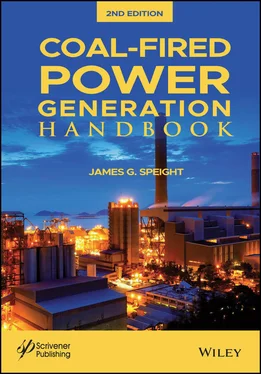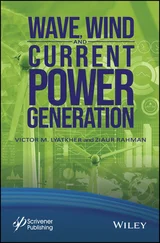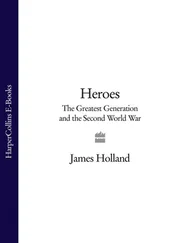**To the present
In terms of coal grade , the grade of a coal establishes its economic value for a specific end use (Ward, 2008). Grade of coal refers to the amount of mineral matter that is present in the coal and is a measure of coal quality. Sulfur content, ash fusion temperature (i.e., the temperature at which measurement the ash melts and fuses), and quantity of trace elements in coal are also used to grade coal. Although formal classification systems have not been developed around grade of coal, grade is important to the coal user.
Another means by which coal is evaluated is through the rank of the coal, which is the most fundamental characteristic relating both coalification history and utilization potential of a coal. Volatile matter and maximum vitrinite reflectance are important values used to determine the worth of coking coals. However, because volatile matter is dependent on both rank and composition, coals of different composition may be assigned to the same rank value even though their levels of maturity may differ.
Volatile matter is not considered to be a component of coal as mined but a product of the thermal decomposition of coal. Volatile matter is produced when coal is heated to 950°C (1740°F )(ASTM D3175) in the absence of air under specified conditions and contains, in addition to moisture, typically a mixture of low-to-medium molecular weight aliphatic hydrocarbon derivatives, aromatic hydrocarbon derivatives, with higher boiling oil and low-volatile tar. Volatile matter decreases as rank increases and when determined by the standard test method (ASTM D3175) can be used to establish the rank of coals, to indicate coke yield on carbonization process, to provide the basis for purchasing and selling, or to establish burning characteristics.
All types of coal contain fixed carbon, which provides stored energy, plus varying amounts of moisture, ash, volatile matter, mercury, and sulfur. However, the physical properties of coal vary widely, and coal-fired power plants must be engineered to accommodate the specific properties of available feedstock and to reduce emissions of pollutants such as sulfur, mercury, and dioxins which reduce power plant efficiency. The efficiency of a coalfired power plant is typically represented defined as the amount of heat content in (Btu) per the amount of electric energy out (kWh), commonly called a heat rate (Btu/kWh). Expected improvements in power plant efficiency mainly arise from the substitution of older power plants with new plants that have higher efficiency.
Calorific value is one of the principal measures of the value of a coal as a fuel and is directly influenced by mineral impurities. Coal mineralogy is not only important to combustion characteristics, but also as materials that can be passed on to secondary products such as metallurgical coke. Alkali-containing compounds derived from coal minerals can contribute to excessive gasification of coke in the blast furnace and attack of blast furnace refractories, whereas phosphorus and sulfur from coal minerals can be passed on to the hot metal, thus reducing its quality for steelmaking.
Mineral matter may occur finely dispersed or in discrete partings in coal and is generally grouped according to origin. A certain amount of mineral matter and trace elements are derived from the original plants. However, the majority enters to coal precursor either during the initial stage of coalification (being introduced by wind or water to the peat swamp) or during the second stage of coalification, after consolidation of the coal by movement of solutions in cracks, fissures, and cavities. Mineral components of plant origin are not easily recognized in coals because they tend to be disseminated on a submicron level. The primary mineral components incorporated during plant deposition tend to be layered with and intimately inter-grown with the organic fraction, whereas the secondary mineral matter tends to be coarsely inter-grown and associated with cleat, fractures, and cavities. Therefore, secondary minerals may be more readily separated (cleaned or washed) from the organic matrix to improve the value of the material.
More information related to coal character and properties is derived from geological studies of coal – which includes a wide variety of topics, including coal formation, occurrence, and properties but which is outside of the purview of this book but is described in detail elsewhere (Speight, 2013).
Lignite (brown coal) is the least mature of the coal types and provides the least yield of energy; it is often crumbly, relatively moist, and powdery. It is the lowest rank of coal, with a heating value of 4,000 to 8,300 Btu per pound (ASTM D388) and is mainly used to produce electricity. With increasing rank (i.e., progressing from lignite to subbituminous coal to bituminous coal to anthracite) the moisture content decreases while the carbon content and the energy content both increase.
Lignite contains the lowest level of fixed carbon (25 to 35%) and highest level of moisture (typically 20 to 40% by weight, but can go as high as 60 to 70%) of all of the coal types ( Chapters 2, 5). Ash produced from mineral matter during combustion varies up to 50% w/w. Lignite has low levels of sulfur (less than 1% w/w) and mineral matter (approximately 4% w/w), but has high levels of volatile matter (>32% w/w) and produces high levels of air pollution emissions. Because of its high moisture content, lignite may be dried to reduce moisture content and increase calorific fuel value. The drying process requires energy, but can be used to reduce volatile matter and sulfur as well.
Approximately 7% of coal mined in the United States is lignite and it is found primarily in North Dakota (McLean, Mercer, and Oliver counties), Texas, Mississippi (Kemper County), and to a lesser degree, Montana. The top 10 countries that produce brown coal are (ranked from most to least): Germany, Indonesia, Russia, Turkey, Australia, United States, Greece, Poland, Czech Republic, and Serbia.
With the growing concern for the environment due to emissions from coal utilization, lignite could as well be used in the production of combustible gases (including hydrogen) through underground coal gasification processes ( Chapters 9, 10).
Subbituminous coal is often brown in color but more like bituminous coal than lignite. It typically contains less heating value (8,300 to 13,000 Btu per pound) and more moisture and volatile matter than bituminous coals, but lower sulfur levels (ASTM D388).
Subbituminous coal is considered a black coal, although its appearance varies from bright black to dull dark brown. Its consistency ranges from hard and strong to soft and crumbly, because it is an intermediate stage of coal between bituminous and brown coal (lignite). It is widely used for generating steam power and industrial purposes. Sometimes called black lignite , subbituminous coal is not stable when exposed to air and tends to disintegrate.
Subbituminous coal is non-coking and has less sulfur but more moisture (approximately 10 to 45% w/w) and volatile matter (up to 45% w/w) than bituminous coals. The carbon content is 35 to 45% w/w and mineral matter ranges up to 10% w/w. The sulfur content is generally under 2% w/w and the nitrogen content is on the order of 0.5 to 2% w/w. The combustion of subbituminous coal can lead to hazardous emissions that include particulate matter (PM), sulfur oxides (SOx), nitrogen oxides (NOx), and mercury (Hg).
Subbituminous coals produce combustion ash that is more alkaline than other coal ash. This characteristic can help reduce acid rain caused by coal-fired power plant emissions. Adding subbituminous coal to bituminous coal introduces alkaline by-products that are able to bind sulfur compounds released by bituminous coal and therefore reduce acid mist formation.
Читать дальше












